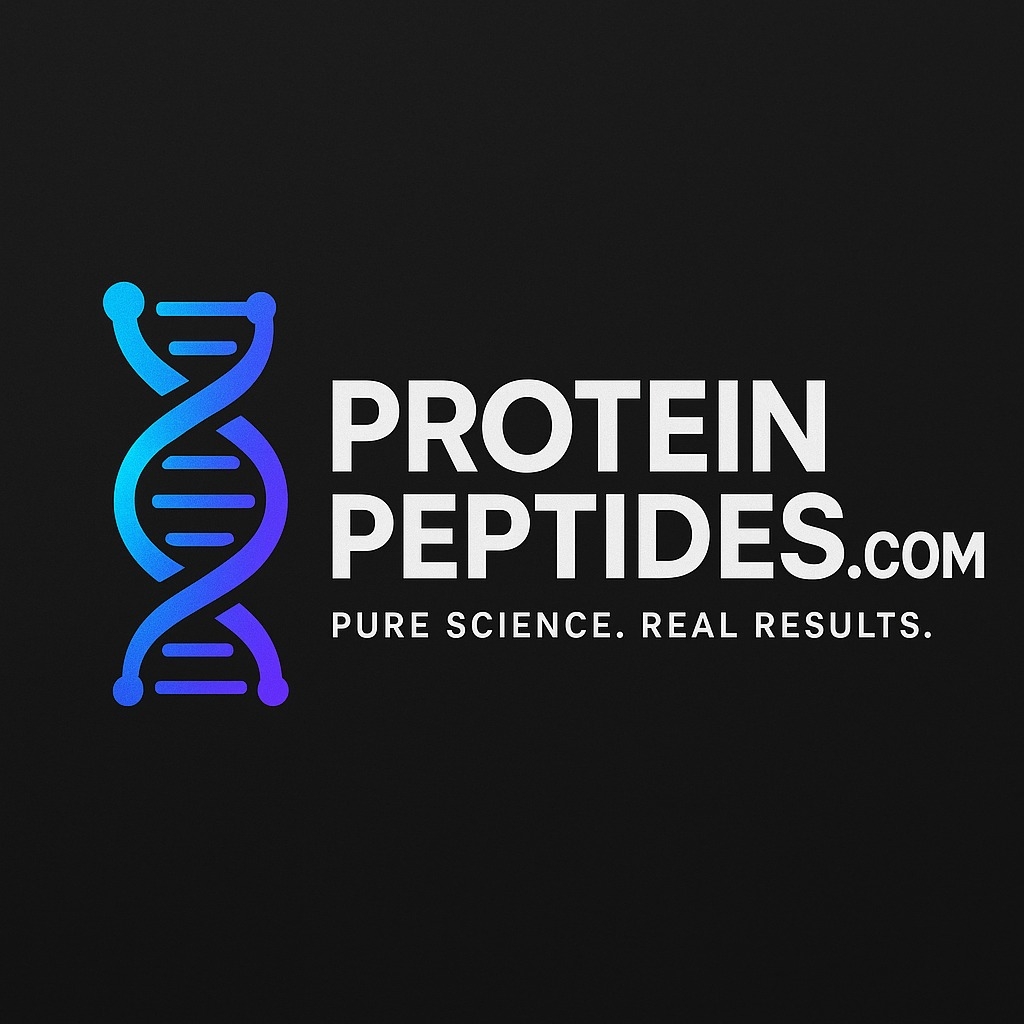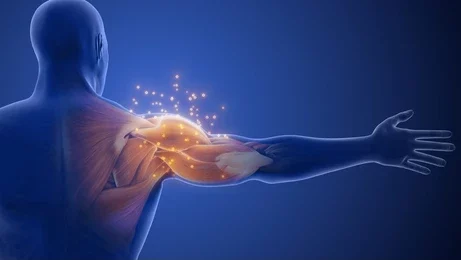Repairing Muscles with Peptides
Muscle repair is an essential process for athletes, fitness enthusiasts, and anyone recovering from muscle injuries. Effective muscle healing not only ensures optimal performance but also prevents long-term damage. Traditionally, muscle recovery has been reliant on rest, nutrition, and physical therapy. However, advancements in science have introduced a novel approach to enhancing muscle repair—peptides. These powerful molecules, composed of short chains of amino acids, have been found to play a vital role in stimulating the body’s natural repair processes. This article explores how peptides work, their mechanisms in muscle repair, and their potential benefits for muscle healing.
The Role of Peptides in Muscle Repair
Peptides are naturally occurring or synthetically created chains of amino acids that act as signals to cells, tissues, and organs. They are involved in a wide range of biological functions, including hormone regulation, immune responses, and cellular repair. For muscle recovery, peptides stimulate the body’s natural mechanisms to repair damaged muscle fibers, regenerate tissues, and reduce inflammation. By acting on specific pathways, peptides accelerate healing and promote faster recovery from muscle damage caused by intense workouts, injuries, or surgeries.
Key Peptides for Muscle Repair
Several peptides have demonstrated significant potential for promoting muscle repair:
- BPC-157 (Body Protection Compound 157): BPC-157 is a synthetic peptide that has shown remarkable healing capabilities, particularly in muscle, tendon, and ligament injuries. It accelerates the healing of damaged tissues by promoting blood flow and increasing the delivery of oxygen and nutrients to the injured area. BPC-157 also reduces inflammation and enhances the production of growth factors that facilitate tissue regeneration, making it a popular peptide for muscle repair.

- TB-500 (Thymosin Beta-4): TB-500 is a peptide derived from thymosin, a protein naturally found in the thymus gland. This peptide plays a crucial role in muscle regeneration by stimulating cell migration, differentiation, and tissue repair. TB-500 is known to reduce inflammation, accelerate wound healing, and improve blood circulation, making it an effective peptide for recovering from muscle strains and injuries.
- IGF-1 (Insulin-Like Growth Factor-1): IGF-1 is a growth factor that plays a key role in muscle growth and repair. It is produced in response to growth hormone release and helps stimulate protein synthesis, essential for muscle tissue regeneration. IGF-1 accelerates muscle recovery by promoting the activation of satellite cells, which are responsible for repairing damaged muscle fibers. By increasing muscle protein synthesis and reducing muscle breakdown, IGF-1 helps to restore muscle mass more quickly.
- Collagen Peptides: Collagen is a primary structural protein in connective tissues, including tendons, ligaments, and cartilage. When muscles are damaged, these connective tissues often need repair as well. Collagen peptides help to support the regeneration of these tissues, strengthening the muscle’s foundation and improving its overall stability. Collagen peptides not only help repair muscles but also support joint health and reduce the risk of re-injury.
- GHK-Cu (Copper Peptide): GHK-Cu is a peptide naturally found in the human body, known for its ability to stimulate collagen production and accelerate tissue repair. GHK-Cu promotes muscle healing by enhancing the regeneration of damaged cells, improving blood circulation, and reducing inflammation. It also supports the repair of connective tissues, which is crucial for maintaining muscle function and preventing further damage.
How Peptides Accelerate Muscle Repair
Peptides accelerate muscle repair through various mechanisms that directly influence muscle regeneration:
- Enhancing Protein Synthesis: Peptides like IGF-1 promote protein synthesis, which is the process by which the body builds new muscle proteins. This is essential for muscle recovery because protein synthesis helps repair muscle fibers that were damaged during exercise or injury. By increasing protein production, peptides ensure that muscle fibers heal and grow back stronger.
- Reducing Inflammation: Inflammation is a natural part of the muscle repair process, but excessive inflammation can delay recovery. Peptides like BPC-157 and TB-500 help reduce inflammation by regulating the body’s immune response. This reduction in inflammation creates an environment conducive to healing, allowing muscles to recover faster and with less pain.
- Stimulating Cell Growth and Regeneration: Peptides like IGF-1 and TB-500 stimulate the activation of satellite cells, which are specialized cells that repair damaged muscle fibers. These cells play a critical role in muscle regeneration, and by promoting their activation, peptides accelerate the healing of torn or strained muscle tissue.
- Improving Blood Flow and Nutrient Delivery: Many peptides enhance blood circulation, which is essential for muscle repair. Increased blood flow ensures that oxygen and nutrients, such as amino acids and glucose, are delivered to the muscles more efficiently. This accelerates the repair process and supports muscle growth, allowing for quicker recovery.
- Strengthening Connective Tissues: Peptides like collagen peptides and GHK-Cu also promote the repair of connective tissues, including tendons and ligaments. Stronger connective tissues improve the overall stability of muscles and joints, reducing the risk of re-injury and improving muscle function.

Benefits of Using Peptides for Muscle Repair
Peptides offer numerous advantages for muscle repair and recovery:
- Faster Recovery: Peptides significantly reduce recovery time, allowing individuals to return to training or physical activity sooner. This is especially beneficial for athletes who need to perform consistently at a high level.
- Reduced Risk of Injury: By promoting faster healing and strengthening connective tissues, peptides help prevent future injuries and support long-term muscle health.
- Increased Muscle Strength: Peptides enhance protein synthesis and muscle regeneration, resulting in stronger, more resilient muscle tissue that can withstand greater strain during physical activities.
- Improved Performance: Faster recovery means individuals can train more frequently and with greater intensity, leading to better performance over time. Peptides can help athletes maximize their training efforts and achieve their goals more efficiently.
- Support for Chronic Conditions: Peptides are also beneficial for individuals dealing with chronic muscle conditions, such as tendonitis or muscle strain. By promoting tissue repair and reducing inflammation, peptides provide long-term relief and improve muscle health.
Safety and Considerations
While peptides have demonstrated promising results in muscle repair, their use should be approached cautiously. It is important to consult with a healthcare professional before using peptides to ensure they are appropriate for individual needs and goals. Additionally, it is essential to use high-quality peptides from reputable sources to avoid contamination and ensure optimal effectiveness.
Conclusion
Peptides are revolutionizing the field of muscle repair by enhancing recovery, reducing inflammation, and promoting faster healing. Whether recovering from a workout, an injury, or surgery, peptides provide an effective and scientifically backed solution for muscle regeneration. By stimulating protein synthesis, improving blood flow, and strengthening connective tissues, peptides enable individuals to recover more quickly and safely, ultimately leading to improved performance and reduced injury risk. As research continues, peptides are likely to become an integral part of muscle recovery strategies for athletes and individuals alike.
Repairing Muscles with Peptides
Scientific and Preclinical Studies
- BPC‑157 has been shown to promote healing of muscle, tendon, ligament, and related tissues in animal models by enhancing angiogenesis, growth factor expression, and reducing inflammation. (medscimonit.com, PMC)
- In crushed or transected muscle injury models (e.g., quadriceps or gastrocnemius in rats), BPC‑157 improved functional recovery, counteracted corticosteroid‐induced delays, and accelerated muscle regeneration. (medscimonit.com)
- BPC‑157 also induces expression of growth hormone receptor and activates pathways (e.g., JAK‑STAT, FAK–paxillin) linked to cell migration, proliferation, and repair. (PMC)
TB-500 / Thymosin Beta-4
- TB‑500 (active fragment of Thymosin Beta‑4) promotes tissue repair via mechanisms such as actin upregulation, angiogenesis, and growth factor activation, improving biomechanical strength and collagen organization in soft tissue injury models. (Pliability)
- It supports cell migration and new blood vessel formation—essential processes in tissue and muscle healing. (Secrets Aesthetics and Wellness Center)
General Peptide Healing Mechanisms
- According to Andrew Huberman (Huberman Lab), peptides like BPC‑157 and TB‑500 are thought to aid tissue repair through enhanced angiogenesis and stem-cell activation, though most data comes from preclinical or anecdotal sources. (Huberman Lab)
- Peptides such as BPC‑157 are gaining popularity for their regenerative claims, but scientific validation—especially in humans—is still limited. (New York Post)
- Media reports highlight the hype and caution surrounding BPC‑157—known as the “Wolverine shot”—noting its supposed healing benefits but also citing lack of FDA approval and clinical backing. (Business Insider)
Summary of Key References
| Peptide | Mechanism / Evidence Summary |
|---|---|
| BPC-157 | Enhances muscle/tendon healing, angiogenesis, growth receptor expression, and tissue regeneration (animal studies). (PMC) |
| TB-500 | Promotes actin production, angiogenesis, collagen structure, and tissue strength in injury models. (Pliability, Secrets Aesthetics and Wellness Center) |
| General | Peptide-mediated healing mechanisms and growing public interest, with limited human data and regulatory caution. (Huberman Lab, GQ, Business Insider, New York Post) |






